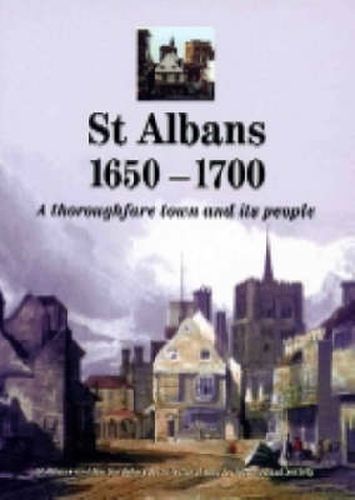Readings Newsletter
Become a Readings Member to make your shopping experience even easier.
Sign in or sign up for free!
You’re not far away from qualifying for FREE standard shipping within Australia
You’ve qualified for FREE standard shipping within Australia
The cart is loading…






The urban history of Britain is being pursued with new vigour and new objectives and its problems tackled through important local studies of social and economic change in Chester, Shrewsbury and Uttoxeter and more recently by studies of smaller towns such as St Albans. This study of St Albans covers the period from the Commonwealth to the accession of Anne which embraces religious and political changes of great interest in the life of a town of strongly dissenting opinion. Curiosity about this critical period in the growth of the city led the St Albans and Hertfordshire Architectural and Archaeological Society to establish its Seventeenth Century Research Group whose members set out to discover what the town’s churches and houses looked like, changes in population, how people earned a living, social structure, religious beliefs and political attitudes. Several features of their research assembled here are unusual in local history writing. Population statistics include an age profile, age at marriage, size of family, crisis years and age at death - with an astonishing infant mortality. Architectural evidence, used to link the death rate to overcrowding caused by intensive development of the town centre, also demonstrates improvements in comfort and amenity and responses to fashion. The social structure and some typical families are described in detail, as is the administrative structure and its workings at both corporation and parish level. The economic background is that of a thoroughfare town, as much dependent on road transport as on its market function. A large database revealed an unusually high proportion of nonconformists and a surprising degree of co-operation between them and the established church, despite the very public murder of one of their number by an ex-Cavalier officer. A tentative explanation is also offered for an equally surprising political change - how the corporation of St Albans, staunchly Cromwellian in outlook in 1650, came, in little more than a generation, to support James II’s policies in 1685.
$9.00 standard shipping within Australia
FREE standard shipping within Australia for orders over $100.00
Express & International shipping calculated at checkout
Stock availability can be subject to change without notice. We recommend calling the shop or contacting our online team to check availability of low stock items. Please see our Shopping Online page for more details.
The urban history of Britain is being pursued with new vigour and new objectives and its problems tackled through important local studies of social and economic change in Chester, Shrewsbury and Uttoxeter and more recently by studies of smaller towns such as St Albans. This study of St Albans covers the period from the Commonwealth to the accession of Anne which embraces religious and political changes of great interest in the life of a town of strongly dissenting opinion. Curiosity about this critical period in the growth of the city led the St Albans and Hertfordshire Architectural and Archaeological Society to establish its Seventeenth Century Research Group whose members set out to discover what the town’s churches and houses looked like, changes in population, how people earned a living, social structure, religious beliefs and political attitudes. Several features of their research assembled here are unusual in local history writing. Population statistics include an age profile, age at marriage, size of family, crisis years and age at death - with an astonishing infant mortality. Architectural evidence, used to link the death rate to overcrowding caused by intensive development of the town centre, also demonstrates improvements in comfort and amenity and responses to fashion. The social structure and some typical families are described in detail, as is the administrative structure and its workings at both corporation and parish level. The economic background is that of a thoroughfare town, as much dependent on road transport as on its market function. A large database revealed an unusually high proportion of nonconformists and a surprising degree of co-operation between them and the established church, despite the very public murder of one of their number by an ex-Cavalier officer. A tentative explanation is also offered for an equally surprising political change - how the corporation of St Albans, staunchly Cromwellian in outlook in 1650, came, in little more than a generation, to support James II’s policies in 1685.